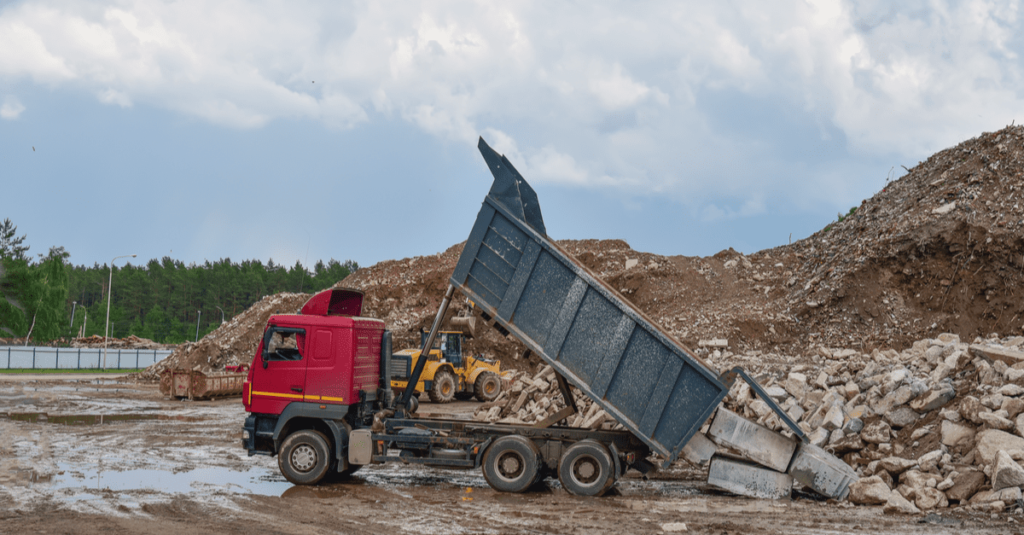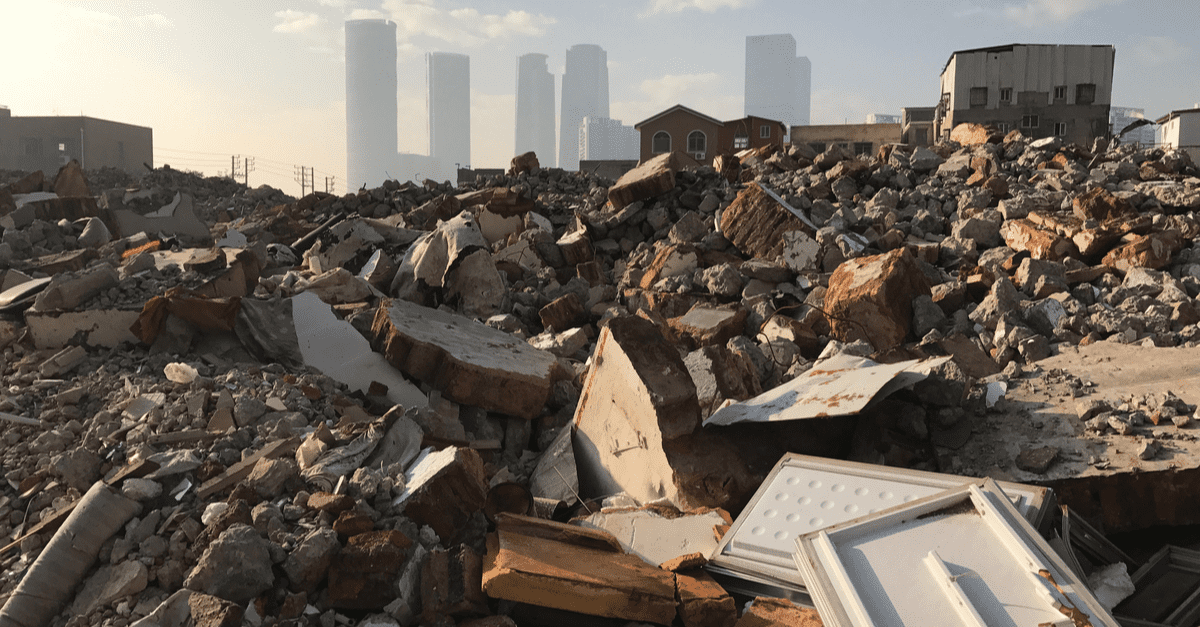
We may have nowhere to dump our trash in less than five years.
Alarmingly, most of Australia’s landfills are expected to be full by 2025.
Across the nation, 30 per cent of waste is sent to landfill every year. The building industry accounts for more than one third of this pie, which doesn’t taste good.
It’s avoidable too. The vast majority of building waste in landfill is actually clean, excavated material that can be recycled. Think of bricks, concrete, clay, metals and timber.
Not only does the pollution harm our planet, but building companies essentially pour money down the drain to dispose of old materials (landfill levis can be high).
There’s also the staggering cost of timber, bricks and other new materials, thanks to ongoing supply shortages. Paul Bidwell, Deputy CEO of Master Builders, predicts that supply issues will continue into 2022.
“The implications are dire. So far, we’ve not heard of any builders going to the wall as a result; but, based on conversations we’re having with builders, it will happen, most likely early in the new year,” he said.
What does this have to do with trash on building sites?
Sustainable construction waste management isn’t a magic antidote to high building costs, that’s for sure. However, it may help. Getting better at recycling and reusing materials could lower supply costs, while also benefiting the planet.
This article explores some of the obstacles and solutions of sustainable construction waste management.
But first, let’s talk a little more about the benefits (why bother with all this in the first place?).
Contents
Construction businesses can save money by purchasing quality reused, recycled or renewable materials – which often have the same properties (sometimes better) than conventional options.
Take engineered cross laminated timber (CLT), for example. Not only is it strong, stable and lightweight, it also requires a smaller foundation compared to steel, concrete and other traditional counterparts. Cost savings can be as high as 15 per cent for mid-rise buildings, as the construction period is shortened.
It’s not just sustainable materials that save money, but also sustainable practices.
Consider modular construction, a building technique that means modular structures are built offsite in a controlled manufacturing plant and later put together on-site. Entire homes and buildings can be constructed using this approach. The best part? There’s less waste and faster delivery (up to 50 per cent faster with cost savings of 20 per cent).
Also consider this:
The more reusable materials that are diverted to recycling, the less trash a building site produces. This leads to significant savings on landfill levies, which can be expensive (especially for big projects). If we focus on NSW, landfill costs can be more than $250 per tonne. Landfill levies are deliberately higher than the cost of recycling, in order to encourage recycling.
Around the world, more consumers are prioritising the environment by stating a preference for companies that take an ethical stance. There are many examples, including a recent study that shows 62 per cent of global respondents want companies to behave in an eco-friendly way. If this actually translates to buying behaviour, then ethical companies stand to benefit by attracting consumers who share their values.
Non-renewable building materials use natural resources that can’t be replenished. For example, metals are made from ore, which shows signs of being in short supply. The mining of metal also erodes soil, contaminates water and leads to a loss of biodiversity. One solution is to use recycled steel, which conserves 75 per cent energy every time it’s repurposed from recycled cans. It retains all of its properties each time it’s recycled, so there’s no need to worry about a loss of quality either.
High amounts of carbon dioxide are emitted when raw materials are extracted, transported and processed. On the flip side, fewer fossil fuels are burned when recycled or renewable materials are used instead. There’s also less air, water and land pollution from litter spilling over from landfill (particularly harmful when heavy metals create a liquid that leaches into the water).

Let’s begin by talking about systemic obstacles that may prevent construction companies from fully embracing sustainable construction waste management. Even if individual companies want to improve their approach to trash, change isn’t easy to implement within the wider parameters of the construction industry and government policies.
China used to take much of the world’s trash, but this changed in 2017, when it severely restricted waste imports.
This decision hit Australia hard, as we relied predominantly on China accepting billions of dollars’ worth of our recyclables every year.
We’ve had to find alternatives across the nation since then, which meant developing our own recycling and waste management facilities. Unfortunately state, territory and local governments haven’t taken robust action.
Australia still doesn’t have enough waste management systems to handle general litter, let alone complicated and hazardous building waste.
In one case, the NSW government took action by proposing to build a plant in Gunnedah for construction waste processing and recycling, however there was strong community resistance. Locals didn’t want the plant in their backyard, due to concerns about water pollution, air quality, traffic and noise.
It’s often the case that local communities don’t want waste facilities in their backyard, even though it’s clear that governments must build more construction waste management plants somewhere.
As stated in the Gunnedah Project Environmental Impact Statement:
“At present, the greater Sydney region, in particular, is already facing pressure as non-putrescible waste streams continue to grow in line with construction activity and major infrastructure projects. While in the longer term these levels of waste may be proportionately reduced with better recycling methods, the pressures of continued population growth, urban development and infrastructure programs will continue to create large ongoing waste streams.”
Interestingly, it seems as though many of the concerns from locals may be unfounded. Research suggests that construction waste facilities actually have a manageable impact on the environment and community health (unlike municipal waste facilities).
This Fifth Estate article calls for the government to do more to reassure locals about the safety of construction waste facilities – as well as the environmental and financial benefits for communities.
“A robust framework for consulting the community, engaging stakeholders and providing information should be developed to accompany any such development,” the article states.
“Community education programs should be based on research.”
Most states and territories have a compulsory waste levy to encourage recycling (which is cheaper), but higher landfill costs don’t necessarily dissuade people from using landfill. In fact, in some cases, this could actually create bigger environmental problems, as seen in Hong Kong, where soaring levies actually led to illegal dumping.
Debate about landfill levies aside, it’s clear that something else needs to be done.
Unfortunately in Australia, there’s no federally regulated extended producer responsibility (EPR) scheme.
What’s an EPR?
A policy that places the financial and physical responsibility of a product’s waste disposal on multiple parts of the supply chain (such as the manufacturers and retailers). These stakeholders must properly recycle or dispose of their product in a cost-effective and sustainable way.
CSR Gyprock is one construction company that’s voluntarily chosen to apply an EPR to its waste materials, with positive results.
The company adopted a take-back scheme to collect offcuts and demolition materials. This strategy enables contractors to completely recycle their plasterboard waste, which saves 1400 tonnes of construction waste from landfill every year.
CSR Gyprock took its own initiative, but it’s in the minority.
In Australia, there are few EPR-driven legal regulations that mandate sustainable waste management on a national scale. Legislation is varied across the nation, and many EPRs are voluntary. A number of resource recovery stakeholders have called on the federal government to develop a mandatory national EPR policy, as this is seen as the most effective approach.
Nilupa Udawatta, a lecturer of construction management at Deakin University, says that fragmentation within the industry makes it difficult for site managers to enforce sustainable waste management practices.
“In the traditional arrangement, there is a lack of coordination or communication between builders, contractors and subcontractors, so it’s hard to implement [waste management plans].”
There are also logistical obstacles in many cases, especially for small projects that may not have enough room for separate bins.
As Dr Udawatta told Renew Magazine:
“Most residential projects end up putting all the waste in one bin,” Udawatta says. “This can cause contamination, which can reduce the possibility of reusing those materials.”
But perhaps the greatest challenge is resistance to change, which is understandable when construction workers are under immense pressure as companies struggle to stay afloat (especially during the pandemic).
However, there may actually be a silver lining to all of this uncertainty, if we can let go of deeply rooted practices that harm our environment, and transition to more efficient and eco-friendly strategies.